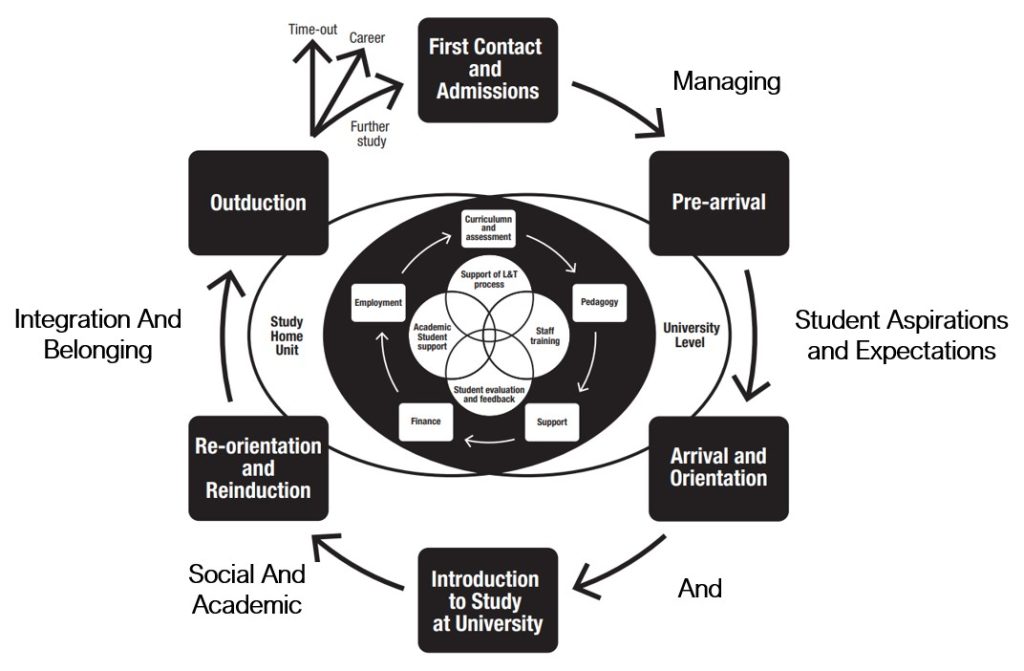This page provides an overview of the themes and activities in SET, guidance on what to consider and an example of using it to develop an initiative.
The Themes in SET
Within each stage, students need to have access to advice, support and guidance, and to be able to engage in a range of activities if they are to successfully complete their studies. All student experiences and activities, can be put into five broad interlinking themes- curriculum and assessment, pedagogy, support, finance and employment (see Diagram 2). As throughout the different stages, student aspirations and expectations need to be managed with focus on social and academic integration. My core interlinking themes must run through each transition stage and through each activity delivered thus bringing together inter-professional engagement.
Diagram 2
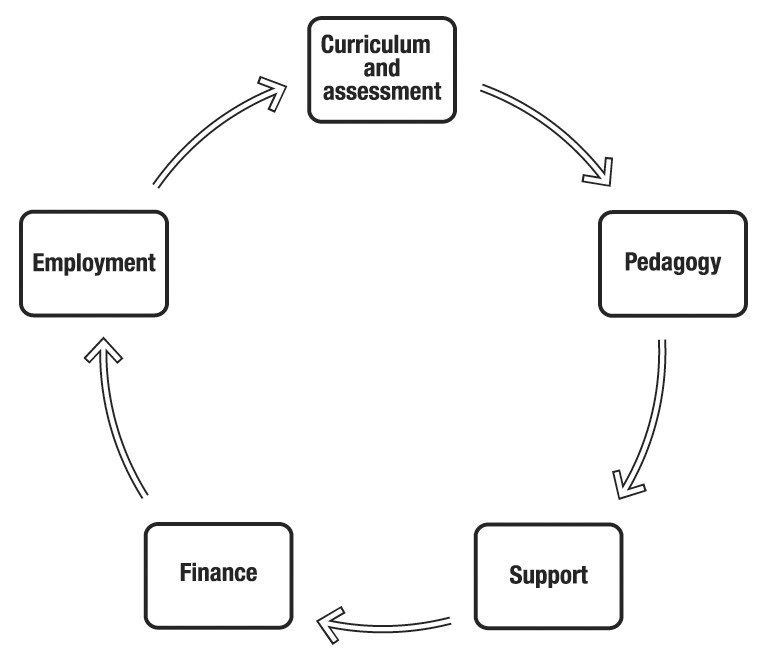
Academic and professional support services, advice, guidance and support at the university and at study home unit level (where their subject is based such as school, department or faculty) must not operate in isolation or in one direction (see Diagram 3). It is essential that there is collaboration in all activities and each activity needs to consider each theme.
Diagram 3
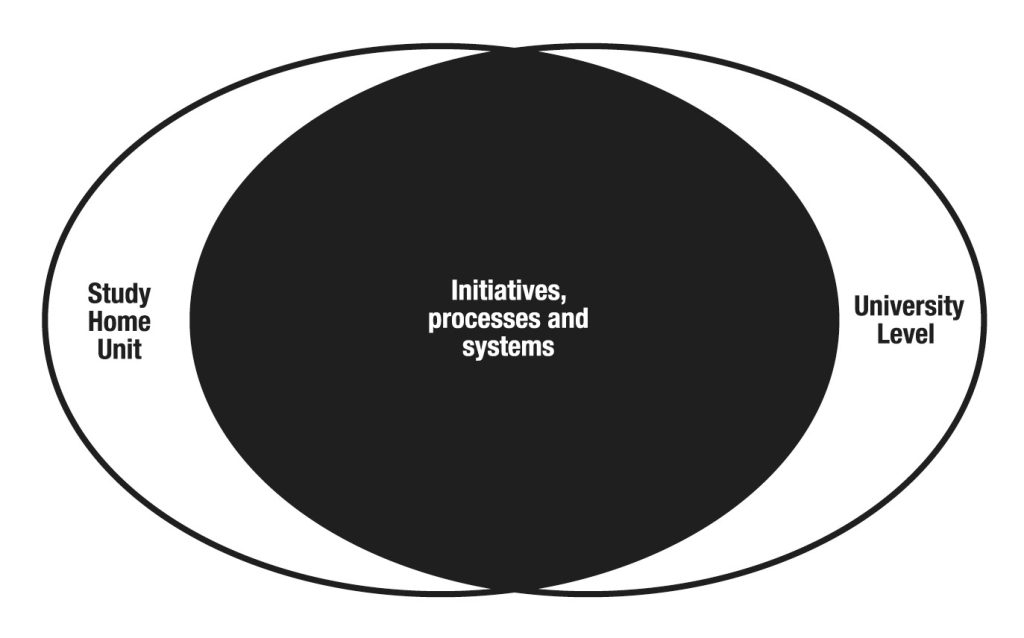
Students need to engage in the same themes at every stage but the content and emphasis of each activity within each theme will vary on the stage and level. For example, a reorientation session for a Level 2 student will have a different emphasis and content to that of a Level 3 student. Students need to be furnished with the knowledge, information, advice and support required for the level they are in so they can make a critical and seamless transition in, through and out, of each academic level. The effective delivery requires a range of academic and professional staff stakeholders to plan and deliver the activity. Table 1 provides a list of the type of things to think about by Stage and Theme and Table 2 provides an example of developing a particular initiative.
Table 1
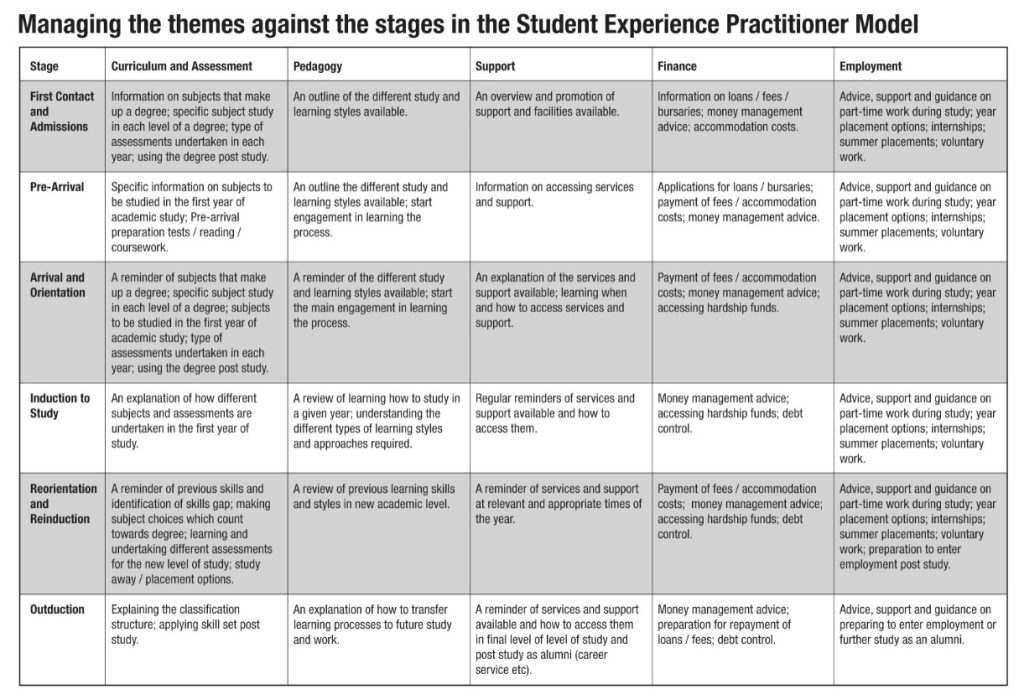
Table 2 Example of developing an initiative using the interlinking themes
A placement year is often viewed as an academic activity in the ‘curriculum and assessment’ theme as it is undertaken as part of a course. However, for comprehensive support, there are a number of factors to consider and deliver across all the themes that require a range of stakeholders.
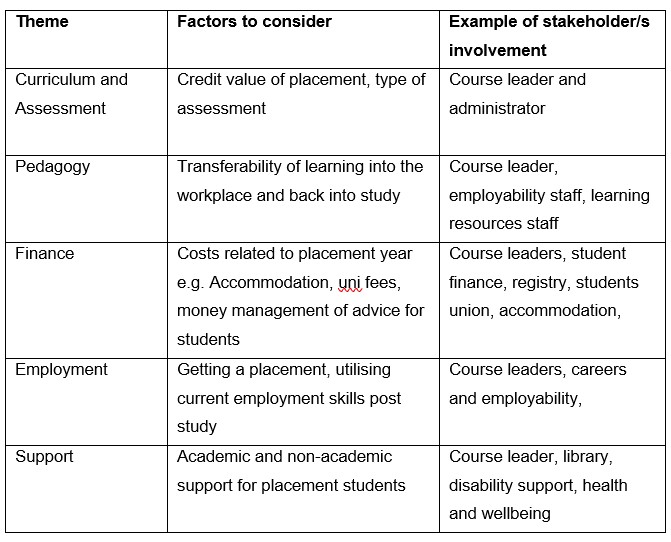
Activities in SET
It is essential that a range of activities are devised, implemented and undertaken by institutions to facilitate the active engagement of staff in improving the student experience (see Diagram 4). These include:
• developing academic student support whether staff or student led;
• providing the correct training for staff to engage effectively;
• supporting the learning and teaching process;
• understanding and engaging in student evaluation and feedback processes that benefit all stakeholders.
As with the stages and themes, these activities need to interlink to ensure no gaps occur. They also need to be integral throughout all of the stages and themes undertaken by home and central university staff in order to deliver a high quality student experience.
Diagram 4
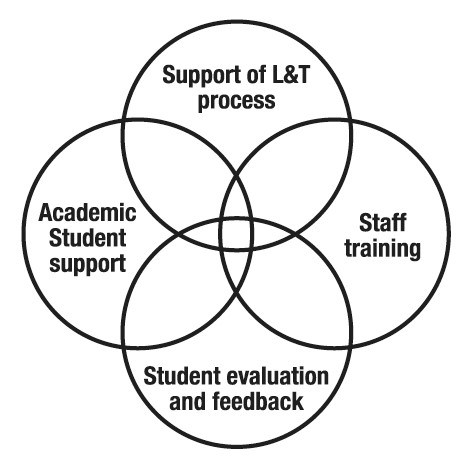
What to ask when developing an initiative
For every initiative developed within a stage or theme, the following questions need to be addressed.
What is the aim and objective of the initiative?
Who needs to be involved in the development of the initiative?
Who is the target group?
What do they need to know?
What information is going to be delivered?
Who will deliver it?
When is it going to be delivered?
Is the timing appropriate?
How will it be delivered?
What is the cost of the initiative?
What is the timeline for the initiative?
Is it financially viable?
Can the initiative and information be adapted for another group of students?
How will it be evaluated and monitored?
Managing expectations
Throughout all the transition stages, themes and activities of the Student Experience Transitions Model (see Digram 5), aspirations and expectations along with academic and social integration and belonging must be effectively managed.
Diagram 5 The interlinking stages, themes and activities of SET
